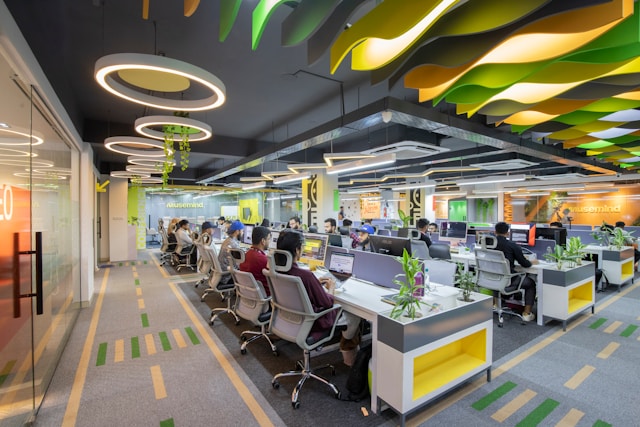Task management tools are more than just to-do lists; they are comprehensive systems that facilitate the planning, execution, and tracking of tasks. These tools can vary in complexity, ranging from simple applications that help organize individual tasks to complex systems that support project management across large teams and organizations. The primary purpose of task management tools is to ensure that tasks are completed efficiently, on time, and within the allocated resources.
Table of Contents
Key Features to Look for in Task Management Tools
When choosing a task management tool, it’s essential to consider the features that will best support your workflow and goals. Here are some key features to look for:
Also read: Top Difference Between Residential Proxies and Data Center Proxies
1. Task Creation and Customization
The ability to create and customize tasks is fundamental to any task management tool. Look for a tool that allows you to:
- Create tasks easily: The process should be straightforward and intuitive, allowing you to quickly add tasks as they arise.
- Set priorities: Prioritization features help you focus on the most critical tasks, ensuring that urgent and high-impact work is addressed first.
- Add descriptions and notes: Detailed task descriptions and notes provide context, making it easier to understand the task requirements.
- Assign due dates: Setting deadlines helps keep tasks on track and ensures timely completion.
- Attach files: The ability to attach relevant documents or files to tasks can improve efficiency and clarity.
Also read: Harold Ford Jr Wife Emily Threlkeld Age, Children, Net Worth, Ethnicity
2. Collaboration and Communication
Effective collaboration is crucial, especially for teams working on complex projects. Task management tools should offer features that facilitate communication and teamwork, including:
- Team assignments: Assign tasks to specific team members to clarify responsibilities and ownership.
- Commenting and discussions: Built-in communication features allow team members to discuss tasks, share updates, and resolve issues directly within the tool.
- Notifications and alerts: Automated notifications keep everyone informed of changes, deadlines, and updates, reducing the risk of miscommunication.
- Integration with communication tools: Integration with platforms like Slack, Microsoft Teams, or email helps streamline communication and ensures that all discussions are centralized.
Also read: Effective Strategies for Recruiting Top Talent
3. Project Management Capabilities
For teams handling multiple projects, robust project management features are essential. Look for tools that offer:
- Project views: Different views such as Kanban boards, Gantt charts, or calendar views provide flexibility in how you visualize and manage projects.
- Task dependencies: The ability to set dependencies between tasks ensures that tasks are completed in the correct order, preventing bottlenecks.
- Resource allocation: Tools that allow for resource planning help ensure that team members are not overburdened and that resources are used efficiently.
- Milestones: Setting milestones helps track progress toward larger goals and keeps the team focused on achieving key objectives.
Also read: Reasons You Need To Safeguard Your Data
4. Time Tracking and Reporting
Time tracking and reporting features are valuable for understanding how time is spent and identifying areas for improvement. Features to consider include:
- Time logging: The ability to log time spent on tasks helps in assessing productivity and resource allocation.
- Automated reports: Generate reports that provide insights into team performance, task completion rates, and project progress.
- Analytics: Analytical tools help identify trends, inefficiencies, and areas where processes can be optimized.
5. User-Friendly Interface
A user-friendly interface is critical for ensuring that the tool is adopted and used effectively by all team members. Consider the following:
- Intuitive design: The tool should be easy to navigate, with a clean and organized layout that makes it simple to find and manage tasks.
- Customizable dashboards: Users should be able to customize their dashboards to display the information that is most relevant to them.
- Mobile accessibility: With remote work and on-the-go requirements, a tool that offers a mobile app or responsive design is essential for staying productive anywhere.
Also read: Top Tips To Find Rental Properties
6. Integration and Compatibility
Integration with other tools and platforms is essential for creating a seamless workflow. Look for task management tools that can integrate with:
- Productivity tools: Integration with tools like Google Workspace, Microsoft Office, or Trello can enhance efficiency.
- Cloud storage services: Compatibility with services like Dropbox or Google Drive allows for easy file sharing and storage.
- APIs: Access to APIs enables customization and integration with proprietary systems or third-party applications.
7. Security and Privacy
Security and privacy are paramount, especially when dealing with sensitive information. Ensure the tool offers:
- Data encryption: Protects sensitive data from unauthorized access.
- Access controls: Allows you to set permissions and control who can view or edit tasks and projects.
- Compliance: Ensure the tool complies with relevant regulations and standards, such as GDPR or ISO standards.
Also read: Ideas To Waterproof The Basement
Conclusion
Choosing the right task management tool can significantly impact your productivity and efficiency. By focusing on the features that align with your needs, you can ensure that your task management tool supports your workflow and helps you achieve your goals. Whether you are an individual looking to organize your daily tasks or a team leader managing complex projects, the right task management tool can be a game-changer in how you work.



